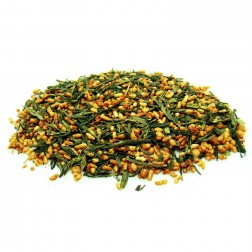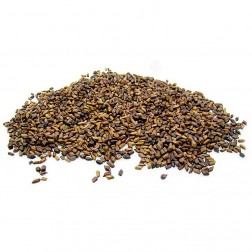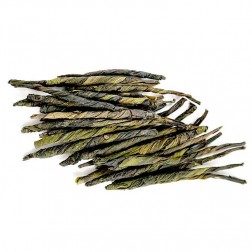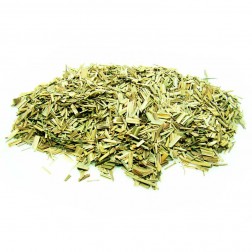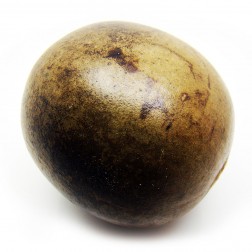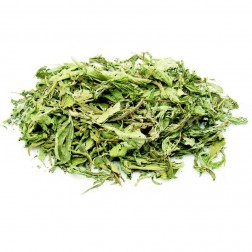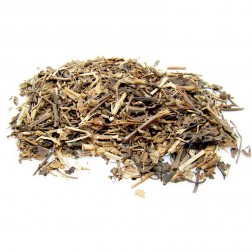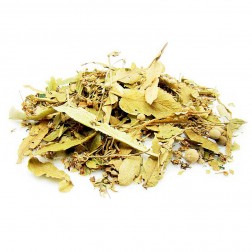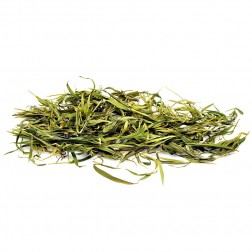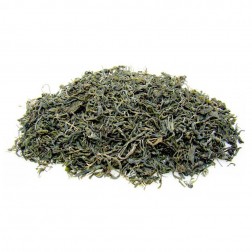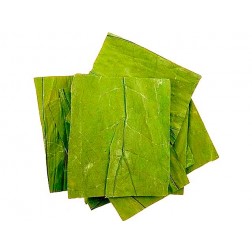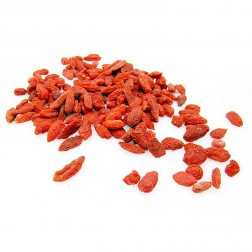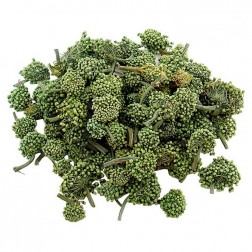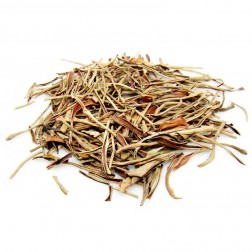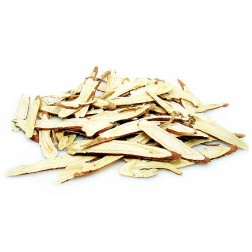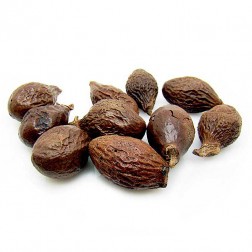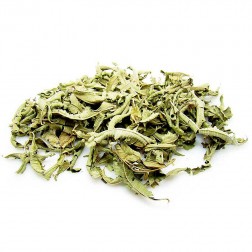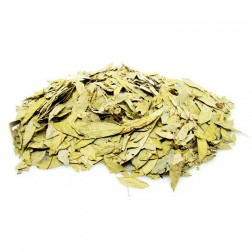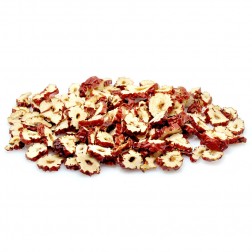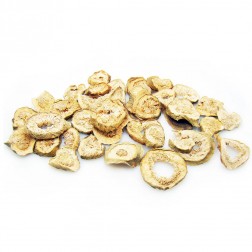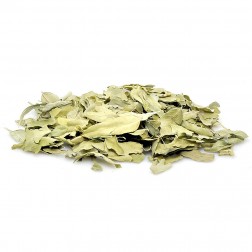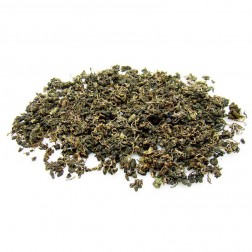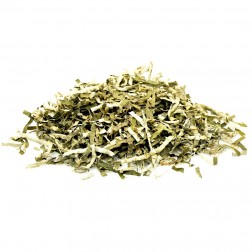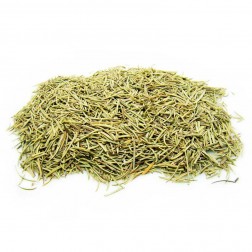Description
Details
Barley tea is a tea brewed from slightly simmering roasted barley grains over a low flame.Barley tea has a mild, slightly nutty flavor just like coffee. But it has no caffeine. It has a toasty taste, with slight bitter undertones, but much less so than tea made from tea leaves and plain coffee. It goes well with any type of food.
This tea is especially popular in Japan, Korea, and China, although it is consumed in other Asian nations and regions with a large Asian community as well. This tea has a very nutty, warming flavor which some people find is a very popular hot weather beverage that's noted for cooling down the body and cleansing the system. In Japan, barley tea is known as mugicha, and it is traditionally served in the summer as a cooling drink. The Japanese also believe that barley tea helps to extract impurities from the blood, and to thin the blood in hot summer weather. In Korea, the tea is known as boricha, and it is drunk hot in winter and cool in summer.
In China, the tea is called 大麦茶 (Da Mai Cha). Chinese people sometimes pair barley tea with heavy meals to aid digestion, and use it to treat nausea. Its properties in Traditional Chinese Medicine include cool, salty and spicy. Brown rice is good for cold, yin-type individuals whereas barley rice is good for warm, yang-types.
If you want a caffeine-free coffee substitute this is for you.
Barley tea is a great way to cool off and relax on a hot summer day. It is a natural antacid. It is good for temporary relief of common cold symptoms. It is made from roasted barley, a grain that is good for cleansing the body, increasing the fluidity of blood and lowering cholesterol levels. It is also better for teeth, since it won't cause cavities, and better for weight control, since it has no calories. It provides the same soothing and comforting feeling on cold winter days as a lot of other types of tea.
Barley Tea Benefits have been noted largely for their nutritional aspects. But recent research has focused on the potentials of barley tea for preventing certain diseases and ailments.
Tokyo (JCNN) - Japanese food conglomerate Kagome (TSE: 2811) has announced that its research division has confirmed a unique property of barely tea.
According to their latest research, continuous intake of barely tea helps improve the fluidity of blood. Moreover, as the density of alkylpyrazine, a key substance in the tea flavor, increases, the fluidity improves further. Detailed research results were presented at the 14th Meeting of Society of Soft Drink Technologies, Japan, held on October 27. Currently, Kagome is marketing barely tea beverage under the trade name of Rokujyo Mugicha.
The grass of barley is known to be a very rich source of fiber, vitamins, minerals, and amino acids. The glutamic acid in barley is the source of much of its antioxidants.
A tablespoon of dried barley is thought to contain the body's daily requirement of beta-carotene, betaine, biotin, boron,copper, iron, lutein, magnesium, niacin, riboflavin, and thiamine.
Barley also contains considerable amounts of alpha-linoleic acid, oryzanol, potassium, selenium, zinc, and tocopherol. Barley grass has long been used in traditional Chinese medicine. It has been prescribed to fight diseases of the spleen or poor digestion. It has also been utilized to treat conditions such as depression or emotional imbalance.
The following are the well known benefits attributed to barley tea:
Rich in fibers, vitamins B1, B2 and Iron. Supplement daily nutrition levels.
Improve blood sugar levels.
Promote blood circulation
Reducing bad cholesterol levels.
Facilitate proper digestion.
calm the stomach
Cleansing the body of toxins.
Relieving early symptoms of colds.
treat thirst and fever
For the elderly and children, barley germ is a more effective option for relieving indigestion.
Traditionally, barley tea is made by tossing a handful of barley grains into a kettle of water, bringing the kettle to a boil, and then allowing the tea to steep briefly before pouring. In some households, the kettle may simply be left out on the stove, with members of the household serving themselves as desired. Over the course of a day, the flavor of the tea will deepen, becoming increasingly nutty and intense.
Individual teapots and cups of barley tea can also be brewed. The amount of barley can be adjusted, depending on the flavor desired.
Some Korean cooks like their barley tea so intense that it tastes almost like coffee, while Japanese often enjoy more mildly flavored barley tea in the summer months.
Barley tea can also be brewed in cold water, or as sun tea (by using exposure to the sun ), which can be useful in the summer, when cooks do not want to heat up the kitchen by boiling water.
To make Barley Tea:
1. Put 20-30g of roasted barley into a tea pot or kettle with cold water.
2. Bring to a boil.
3. Reduce heat, cover and simmer for 5 minutes.
4. Strain through cheesecloth (or strainer) , forcing out all the juice.
You could add honey as the sweetener after the barley tea soup cool down a bit.
Additional
Additional Information
| Wholesale Notice | Have a Question about Wholesale? Please check the detailed instruction page here. |
|---|---|
| SKU | ESH-023 |
| Chinese Name | 大麦茶(dà mài chá) |
| Other Names | Hordeumvulga, Barley, |
| Teaware | Glass Pot, Glass(Tumbler), Piao Yi Tea Maker, Porcelain Cup |
| Water Temperature | 95℃(203℉)+ |
| Steeping Instructions | Place herbals into the glass pot→Add hot water→Steep for 3-5 minutes(A candle warmer could be used to achieve better results) |
| Storage | Seal tightly, store in a cool, dry place away from sunlight and odour. |
| Country of Manufacture | China |
| Price | $1.00 |
| Packing & Weight | 50g~500g/bag. Default packing with aluminium coated kraft paper bag. |
Reviews
If you have any question concerns about our products or don't find what you need on our site, please contact us via [email protected] and we'll reply soon!

